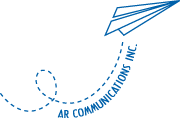Twitter, Twitter, Twitter. That’s all I seem to be hearing these days. Granted, when your user base is growing at the pace of 300,000 accounts everyday (over 105 million users to date), you are bound to garner some attention. Just to put it in context, 4 billion tweets were posted on Twitter in the first quarter of 2010. That’s a lot of conversations.
I must admit that I was not an immediate Twitter convert. For some reason, I really did not feel the need to know, in 140 characters bursts, what someone had for breakfast or dinner. Fortunately, I regularly speak to people who are much wiser then me, and as a result have become a convert.
Due to the inordinate number of questions I get from clients about Twitter and its application to business, I am going to do two things. First, I’m hosting a Webcast in the next few weeks to answer your questions. Second, my next few posts will highlight some powerful Twitter apps and their business utility. The first one is TweetBeep (http://tweetbeep.com/). It is very similar to Google Alerts but instead of searching the Web, it focuses on the Twitterverse. Once you register (free) you are asked to create a set of key words or phrases. Anytime these appear in a publicly available Twitter conversation (most are), you will receive an email alert.
How is this useful, you might ask? It can give you a head’s up on tweets mentioning your products, services, customer service or other facets of your business. When the chatter is positive, you may have yourself some champions. When, on the other hand, the tweets are negative, it enables you to very quickly address whatever the issues may be. Finding out about negative comments right away, as opposed to waiting until they wind their way through the Web, can save time, money and brand equity (what old fashioned marketers call reputation). Try it out and let me know what you think by posting a comment.
